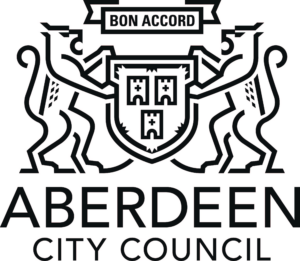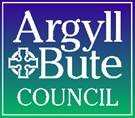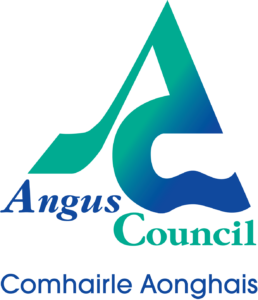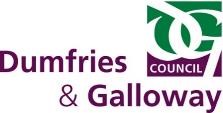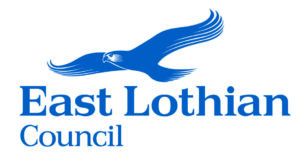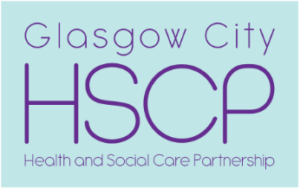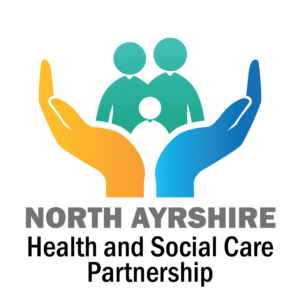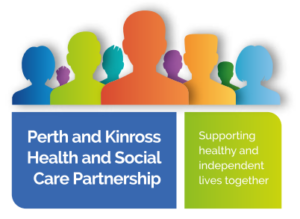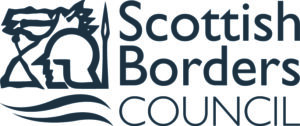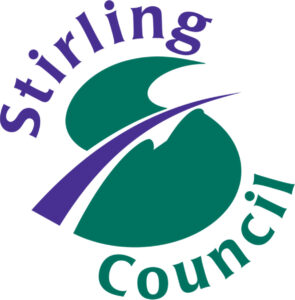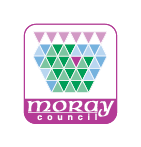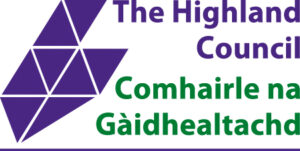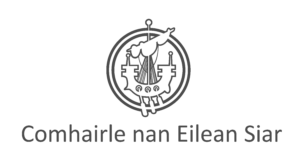Social Work Scotland is the professional body for social work leaders, working closely with our partners to shape policy and practice, and improve the quality and experience of social services. The National Guidance for Child Protection in Scotland is a critical resource for social workers and our partners, providing the framework within which local processes and practice to safeguard children and support to families is developed. It is of the utmost priority for Social Work Scotland, representing the perspectives of professionals most directly associated and responsible for child protection, that the guidance facilitates continuous improvement in all parts of the country, without eroding local innovation and success.
Summary of key points
- Social work is uniquely placed to provide comment on child protection processes in Scotland, due to its involvement in all aspects of the promotion of children’s welfare and wellbeing.
- We welcome the guidance’s contribution to embedding UNCRC, and progressing improvements identified in The Promise (the final report of the Independent Care Review).
- We are concerned that the draft guidance, reflecting a growth of specific legislation and centralised direction over recent years, does not adequately emphasise the importance of a “whole system” approach, and the principles which underpin the Children (Scotland) Act 1995, the Children’s Hearing (Scotland) Act 2011 and ‘It’s Everyone’s Job to make sure I’m alright’. We consider these to be crucial in ensuring a common starting point for supporting families (as emphasised within The Promise).
- The draft guidance has lost some of the clarity of the 2002 and subsequent 2010/2014 versions, which encouraged professionals from other disciplines to raise welfare concerns early, not solely around “significant harm” (which appears to be the focus of the revised guidance). Relatedly, the draft guidance may create confusion among and between professionals, potentially increasing risk to children; the focus on ‘significant harm’ may encourage some to tolerate concerns until they reach a critical point before sharing with relevant agencies.
- The document is unclear about whether it is guidance for certain professionals who have responsibilities in the arena of child protection or, as we had understood when it was being developed, it is an overarching document that clarifies the expectations and obligations on all agencies involved in promoting the welfare of children and families with whom they provide services. We strongly believe it should be the latter.
- The document does not seem to provide national guidance from which local multi-disciplinary procedures can be developed. Single agency responsibilities are very detailed for some professional areas (e.g. heath, social work) but not others (notably education). This is likely to lead to confusion about whom the guidance is for, and may undermine the centrality of some professionals (such as teachers) in identifying and highlighting child welfare concerns. This is in contrast to the current practice arrangements across Scotland, where multi-disciplinary networks work together to develop procedures informed by assessment of local need, and whom encourage practice that promotes children’s welfare and protection in all parts of the community.
This response is informed by consultation with Social Work Scotland’s membership via the following groups:
- Chief Social Work Officers (CSWO) Group – A network of local authority CSWO, providing national leadership on social work issues, and facilitating discussion, collaboration and practice development.
- Children & Families Standing Committee (CFSC) – Supports management and delivery among local Children and Families services, with the aim of improving practices to support the most vulnerable children and families in Scotland. It Promotes partnership between children and families, communities, statutory bodies and the 3rd sector, local government, Scottish government academics and other professional bodies.
- Child Protection Subgroup (CPSG) – supports the work of the Children and Families Standing Committee through in-depth discussion on Child Protection policy and practice. Enables the sharing of practice, networking, and supports the committee feedback loop regarding new and emerging practice issues.
Question 1: Advice and Accessibility
This guidance seeks to provide advice to local partnerships and agencies to inform the development of local guidance, and has been structured in sections that are intended to be standalone and accessible to practitioners seeking advice on particular aspects of practice. In your view, does the guidance fulfil these objectives? If you do not think the guidance fully fulfils these objectives, or if any sections are not sufficiently standalone please explain your view and suggest how improvements could be made
To some extent. There are some areas within the guidance that we suggest are reviewed and amended to enhance accessibility and to enhance readers’ understanding of the Child Protection (CP) system in Scotland. For example, we would ask that there are clearer statements on the role of all key professionals in the child protection system, including individuals employed within education services, among others. These individuals have responsibilities to work alongside others to provide a holistic response to local need, in line with the intention of “It’s Everybody’s Job.” This should be more robustly outlined and detailed within the final draft. There are also some areas where we believe the tone or language used is inconsistent; we highlight these areas in our answers to specific consultation questions.
We understand the draft guidance will be subject to an Islands Communities Impact Assessment. We welcome this, as it would be beneficial for the final document to more explicitly reference issues relating to remote and rural life, such as challenges associated with delivering the range of services and approaches, suggested within the guidance.
We have a general concern about the length of the document, and as a consequence the accessibility of it in a hard copy format. This has implications around cost (for those who will want hard-copy versions), particularly if the document is regularly updated. We appreciate the draft has been developed with a digital readership in mind, but the realities of how it will be shared / circulated / referenced locally need to be borne in mind too. Our experience in preparing this consultation response was that many people used a hard copy to review and comment.
Perhaps most importantly, in reference to Getting it Right for Every Child (GIRFEC), some members of Social Work Scotland expressed concern that, because of recent legal challenges to the ‘named person’ role and data sharing, and more generally a lack of direction from Scottish Government around GIRFEC implementation, the language used in the guidance (i.e. named person) would not be understood consistently by local areas and different professional groups. Indeed, the embedding of child protection in GIRFEC – while welcome – may actually prove a barrier to the guidance being adopted. Social Work Scotland is a stronger supporter of GIRFEC, and would like to see a much stronger lead from Scottish Government in making the policy real for all children. But in the interests of securing a clear framework within which local conversations about child protection can take place, we recommend that the references to the ‘Named Person’ be removed from the guidance. We would ask that the responsibilities of those working in universal services (as articulated in “It’s everyone’s job”), are more clearly emphasised instead. This would include an expectation that each local area would develop their own multi-agency guidelines, with all relevant agencies / professions collaborating in the promoting the welfare and safety of children in the community.
Finally, the excellent work undertaken in curating and producing this draft guidance will be lost if there is no commitment from Scottish Government to ensure that the guidance is subject to regular review and revision as required.
In reference to the various sections of the guidance:
Part 1: The definitions are helpful and clear, however consultation question 8 below references a definition of ‘Neglect’ which does not appear in this section. A recommendation in relation to this is made within our response to consultation question 8.
Part 2: Single agency responsibilities are very detailed for some professions, but not all. We have some observations in relation to the adoption and delivery of responsibilities by other agencies, which we outlined within our answers to relevant consultation questions below.
Part 2b: This section is positive and promotes a strength based approach; focussing upon capacity to change and trauma informed approaches. However, there is a need to consider the responsibilities and rights of both parents, if named on the child’s birth certificate and whether both or one of them is an active participant in the child’s life or not.
Also, while we accept that it is helpful to share examples of models, there is a danger that the certain models/approaches featured may be seen as preferred models. Some local areas may have considered these models but ruled them out for particular reasons. Others may have adopted different models, not referenced in the guidance, but which are delivering positive results. Therefore we recommend that references to intervention programmes or models of practice should be detailed within the resource section alone, to avoid confusion for areas of Scotland who have chosen not to adopt a specific practice approach mentioned, and to avoid the interpretation that the models referenced are a national recommendation..
Part 3: This section is clear and helpful.
Part 4:.Covers a comprehensive range of issues and could be a helpful resource to increase people’s knowledge of particular issues. There are areas where the use of trauma informed language and support could be strengthened by explaining the impact of a traumatic event (i.e. removal of a child as a result of a CP process). We also have some suggestions in respect of tone or language that are reflected in specific consultation answers below.
Q2: Legislative and Policy Development.
This revised guidance seeks to reflect legislative and policy developments since 2014 and include relevant learning from practice and research. Are you aware of any additional legislative or policy developments, research or practice that should be included? If so, please provide further details.
To some extent. The information on legislative and policy development is clear in the document, and the legislative processes, policy frameworks, etc. that have an impact on CP planning and responses are explained clearly. There is good use of referencing throughout the document, to assist practitioners. However, some members queried why some relevant legislation was embedded in the core guidance but others only referenced within the appendix. Such detail is important to how the guidance is interpreted and treated by various stakeholders, and may influence how various practitioners understand the legislative obligations they are under. For example, the Community Empowerment (Scotland) Act 2015 and Local Government in Scotland Act 2003 both promote joint working and identification of priorities by Community Planning Partnerships; such as child protection. Without being explicit, the relevance of such legislation, in respect of managing child protection activity, may be less clear to partner agencies.
Furthermore, while the references to legislation is comprehensive, we are concerned that the current draft does not adequately emphasise the centrality of a “whole system” approach to child protection, or to the shared responsibilities detailed within (among others) the Children (Scotland) Act 1995, the Children’s Hearing (Scotland) Act 2011, and ‘It’s Everyone’s Job to make sure I’m alright’. The range of legislative addition and revision over recent years causes much confusion, and the guidance therefore needs to provide all partners with a common understanding and starting point, from which joint action to support families is organised and delivered.
The Chief Social Work Officers Group also noted that the guidance includes much more prescription and direction in respect of the social work role than it does for other professional roles involved in child protection. While social work does of course hold a key role in the system, it is important that we do not lose sight of the fact that relevant legislation stipulates that it is the ‘local authority’ that is responsible to support a ‘child in need’ (as per the Children (Scotland) Act 1995) and in inquiring into the child’s circumstances for the purpose of making a referral to the Reporter (as per the Children’s Hearings (Scotland) Act 2011). This emphasis on social work may have the dual unwelcome effect of diluting the inherent, core responsibilities of other agencies/professionals and diminishing their role in partnership working in the context of child protection concerns. We ask that this is reviewed.
In respect to specific policy areas which could be better profiled, Equal Protection and Female Genital Mutilation (particularly around the ability to secure protection orders) were identified as needing greater prominence within the section ‘legislation relating to child protection’. Whilst we note these are included in Part 4 of the guidance, it feels disconnected from Part 2. Indeed the connections between Parts 2 and 4 would benefit from a review and revision to ensure a more coherent narrative.
The amendment of key terms, for example the shift to ‘Child’s Protection Planning Meeting (CPPM)’ from ‘Child Protection Case Conference’ is viewed by many members as a welcome attempt to make the delivery of these meetings more accessible to children and carers who attend, and who should be encouraged to participate. But changing the name of a process will not, in and of itself, be enough. We recommend that the proposed new terminology, and the rationale for its use (i.e. UNCRC, The Promise) is given more prominence within the document itself, and within the training and implementation programme which should follow the final published version.
Members also suggested that that the guidance include information about:
- Individuals with No Recourse to Public Funds
- Travellers’ rights and leaving school early
- References to a father’s paternal rights and responsibilities, linked with being named on the birth certificate
Q3: GIRFEC Practice Model.
Our aim is to ensure that the guidance is fully integrated with the language and core components of the Getting it right for every child (GIRFEC) practice model. Do you think the revised National Guidance for child protection is integrated with the GIRFEC practice model? Please explain your answer.
Yes. The language and core components of GIRFEC are clearly evident within the draft. Moreover, the principles and objectives of GIRFEC run throughout Parts 3 and 4, appropriately framing identification and responses to child protection concerns within the national practice model. The guidance also helpfully shows the relationship between GIRFEC and contextual safeguarding, illustrating that these approaches are not distinct but are in fact mutually supportive, situating a child within their wider world.
The explanation and links to GIRFEC principals are presented in an appropriate tone, and provide welcome clarity on some key issues, such as information sharing. The references to and reflection of GIRFEC also, to an extent, make clear the roles and responsibilities of the network of professionals who have a role in child protection. However, as noted previously, we feel that the role of education colleagues is not as clearly articulated and defined as it needs to be within national guidance, when considering what a central and important role they have in promoting the welfare & protection of Scotland’s children.
A number of Social Work Scotland’s members expressed caution about the use of GIRFEC terminology; in particular the ‘named person’ and ‘lead professional’. There appears to be some confusion within our membership, reflecting different decisions in local areas, about the continued relevance of these titles/roles following the UK Supreme Court ruling in 2016, and continued delay in commencement of Parts 4 and 5 of the Children and Young People (Scotland) Act 2014. CSWO’s were keen to highlight that some areas have retained the terms/roles, with GIRFEC implementation well-progressed. We support the decision to base the child protection guidance within the GIRFEC framework, but while the Scottish Government’s job of implementing the policy remains half-done, the coherence and impact of the guidance is undermined. We strongly urge the Scottish Government to make clear the status of the policy, and its expectations in terms of its implementation locally.
In respect of the text relating to the importance of sharing information, we suggest strengthening this section further so that practitioners from all/any discipline are aware of the need to include the families/individuals concerned in any decision to share information, but also of the criticality of sharing information when their professional judgement suggests it is necessary to do so in order to protect the child’s wellbeing. This is extremely important, given the repeated findings of Significant Case Reviews and other inquiries.
Further clarity around how professional responsibilities extend to young people aged 16 -18 within the child protection arena would also enhance the guidance.
Q4: Practices and Processes.
Part 3 seeks to accurately and proportionately describe the practice and processes critical in the protection of children. Are there any practices or processes that are not fully or clearly described in the guidance? If so, please state which processes/practices are not fully or clearly described and suggest how the description could be improved.
To some extent. Embedding the guidance within GIRFEC is welcome and, our earlier comments notwithstanding, should assist in developing child practice as part of the GIRFEC approach, rather than being a “stand alone” system of formal intervention. However, while there remains confusion about the status of GIRFEC within areas of Scotland it is likely to lead to differing practice and inconsistency about its interface/connection with Child Protection procedures. We would encourage the Scottish Government to reaffirm its commitment to the GIRFEC approach, making clear all agencies responsibility towards delivery of ‘whole system’ child welfare processes.
We welcome the tonal shift in the guidance, away from the use of stigmatising language to a more child welfare and early support discussion. We are hopeful that, in line with the ambition of The Promise, this will encourage and facilitate more relational approaches towards families and children who require support.
Changed terminology, such as that from a Child Protection Case Conference to a Child Protection Child’s Planning meeting, have the potential to positively shape practice. We feel that these changes, for example moving to the production of a plan to address concerns rather than a minute to record concerns, encourage practitioners to work alongside and support families as opposed to intervening and directing. Some SWS members argued that this shift could go further, with that the wider adoption of safeguarding as a reference point (instead of child protection) helping to enhance a commitment to working with families, rather than intervening when there is a risk or need.
However, on a practical level we heard concerns that the tonal shift (designed to ensure CP systems could be the door into a helpful, relational dynamic between family and professionals) is in conflict with the proposed timescales and expectations of the formalised protection element of the guidance. One particular area highlighted, elaborated further within our response to Q10 below, is around the timescales for pre-birth assessment and protection procedures. Moreover, some members were concerned that the practice and processes described in the guidance appear to be prescriptive, with little flexibility to allow existing, effective practice to be continued. Clarity about what is a legislative requirement and what is a recommendation would be welcome.
Q5: Assessment Section.
A new section of this National Guidance (Assessment part 2b) provides advice about child protection assessment practice. Is this section sufficiently clear and does it cover all the aspects you would expect? Please suggest how this section could be improved.
To some extent. We feel the new section 2b is a welcome addition to the National Guidance and will prove to be a good reference point for practitioners. We fully agree that assessment be based on the child’s experience. The emphasis on strengths-based approaches is particularly welcome, as this will help promote the participation of families. We echo the importance, stated in the guidance, of recognising the parent’s capacity to change in ‘a timescale that meets a child’s needs’.
The approaches described provide a good overview, allowing practitioners to explore emerging themes further, and is enhanced by the inclusion of the reference to the Risk and Resilience Matrix. We suggest that this section could be enhanced further by additional references to the Scottish Government’s National Risk Framework, and clearer linkage to the pre-birth assessment guidance consulted upon within Q10.
Members were, however, unclear about the presentation of Family Group Decision Making (FGDM) within the child protection continuum. FGDM can be an appropriate way of engagement with a wider family network who can offer support, but only where there are no known concerns around intimidating or coercive control being evident from members of the family group. It would not be appropriate, for example, where there has been a history of domestic violence. If FGDM is to remain as a suggested model of practice, then reference to abusive partners and the risks they may present to this process must be explicitly stated.
We would suggest the following amendments to this section, with a view to strengthening its value to all practitioners.
- Page 71 – In references to ‘attachment’, the use of the word “strong” can be misleading. Best practice would be to use the descriptors of “secure” or “insecure”. We are also concerned that the guidance implies that an assessment of attachment can be undertaken within focussed child protection process.
- Page 73 – Strength-based-approaches should include a clear outline of trauma informed practice, and how this can be used to inform practice within a CP context.
- Page 76 – Capacity to change, in line with the ambition of The Promise, tailored support to the families’ specific needs should be more clearly stated.
- Page 77 – Learning Culture – “bridges, cliffs & walls” may be better described as “providing meaningful support”.
- Page 79 – “Avoiding common pitfalls”, may be better described as “Important things to consider when undertaking an assessment.”
- Page 80 – “Developments” may be more clearly described “Developments in Child Protection”.
Q6: Description of child protection processes and procedure.
This National Guidance covers the consideration, assessment, planning and actions that are required, when there are concerns that a child may be at risk of harm. It also provides direction where child protection procedures are initiated. This is when Police, Social Work or Health determine that a child may have been abused or may be at risk of significant harm and an Inter-agency Referral Discussion (IRD) will take place. Are the processes and procedures that lead to and follow IRD clearly described within the guidance?
To some extent. The process as laid out in the draft appears logical and well presented. However, it does not give appropriate regard to rurality (and the implications of following the specified processes and procedures). The challenges faced by partners working in more remote or island communities with few resources or limited access to more specialist agencies/premises is not sufficiently taken into account. Indeed, the guidance does not satisfactorily acknowledge the shift from current practice which these processes will represent for many parts of the country. We acknowledge the intention to undertake an Islands Communities Impact Assessment prior to final publication, and would suggest that this step inform further direct consultation with key practitioner representatives across Scotland, to help shape the national implementation plan, and ensure what is proposed is doable.
CSWO’s raised significant concerns over the perceived level of direction the guidance provides for Social Work services, in contrast to other professional groups. While social work perform critical and central functions, child protection is everyone’s responsibility, and the guidance must be equitable in defining the roles and responsibilities of our partners in health and education. We accept, however, that further work is needed to inform the implementation plan accompanying this guidance, surfacing the barriers to understanding/engagement which we see in different professional groups.
The draft guidance (at page 90, points 31 – 33) led to some confusion among members in respect of the Interagency Referral Discussion and its connection to a Child Protection Planning Meeting (CPPM). Confusion led to concern that the guidance could actually lead to more formalised CP responses in practice, as opposed to the principals of a local assessment and response informed by the individual needs of the family (which is, we believe, the aim of the guidance). Without clarification, this element of the guidance could lead to an abuse of professional power over families. It is our view that all points of referral or connection to the child protection “system” should rightly and appropriately lead to an offer of support and assistance to children and their families. This would not always have to be arranged via a CPPM. We would ask that this section is revised, with examples of reasoned decisions given to reduce misinterpretation. Moreover, it should be clear that, where possible, an IRD may have a role in arranging or brokering support services (e.g. via referral to a third sector provider), and that this should be considered without the need to convene a CPPM. In our view, it would not be an effective system that sees all children who are the subject of an IRD proceeding to investigation, nor would it be an effective system that sees all children who are subject of an investigation being considered by a CPPM. Through the effective gathering and sharing of information to inform a robust risk assessment we should have a system that supports the least intrusive and most supportive levels of intervention at all stages. This is not sufficiently clear or explicit in the current draft guidance; however, this is how a GIRFEC approach to child protection is and should be achieved.
The current explanations around the IRD and CPPM process and associated timescales is unclear. We would welcome clarification on whether this has been factored into the 28 day timeline, with a minimum of 5 day’ notice to families. To enable comprehensive review of the report by all partners, including the family and their advocates/representatives, we do not consider the “extended” 28-day timescale to be enough and suggest this require further discussion and consideration with those involved in managing child protection processes. Indeed, we believe the suggested timescales within all aspects of Part 3 require further review. Local capacity and resource issues need to be taken into account.
More generally, the current draft of the document does not make it the flexibility around the IRD process clear. For example, if concerns arise with a family already in receipt of support, which require a move to a CPPM, the process may not necessarily involve an IRD.
A more explicit and comprehensive identification (in the guidance) of potential key IRD participants would be beneficial, which should include 3rd sector agencies as appropriate. In addition, further consideration of the important role education colleagues play as early responders to child welfare concerns, and their role in calling for an IRD.
Partnership working is implicit within the document, however, the practical application of this can cause a level of confusion, where the resourcing challenges of producing an actual written minute within timescales can become a source of tension. It would be helpful if the guidance provided clarity about the lead agencies’ responsibility in meeting timescales in relation to records of decisions and action points, and the sharing of it with all partners and the families involved.
Finally, we note the move from Joint Investigative Interview (JII) to the Scottish Child Interview Model (SCIM) and would ask that the finalised guidance is reviewed and redrafted as appropriate to ensure it accurately reflects the SCIM model, with particular reference to highlighting that the interview planning and timing will be informed by the child’s needs. It would be helpful to more robustly highlight the child’s informed consent not only within the SCIM process, but also in all aspects of IRD, CPPM within the guidance.
Q7: Integration of health guidance.
We have integrated previously separate guidance for health practitioners into the revised guidance and more clearly defined the key role of health in protecting children at risk of harm from abuse or neglect. Do you have any comments on specific aspects for health practitioners?
We welcome the inclusion of the Health Guidance, and recognise that this will assist colleagues across disciplines to gain a better understanding of the roles and responsibilities each partner has in promoting the welfare and protection of children in Scotland. For example, we note the increased prominence of Health as a lead within the IRD process and welcome this development (although there are specific issues in relation to the recording and dissemination of IRD’s, highlighted in our response to question 6, which need to be addressed). As part of the implementation plan to accompany this guidance, it may be a good idea to develop joint training across all parties, to ensure a coherent inclusive trauma informed approach to chairing and recording IRD’s.
As noted in previous answers, in relation to the day-to-day child protection responsibilities health professionals, we believe the guidance could be clearer and more specific. This would help avoid any ambiguity for health professionals, remove the potential for misunderstanding and disagreement, and reinforce the central message that child protection is everyone’s job. It would also help non-health professionals better understand the role of their health colleagues.
It would be beneficial if the guidance is amended to ensure that there is common understanding of who would undertake a comprehensive medical examination, and the location of this, depending upon the needs of the individual child and the resources available. Not all children will be in reasonable proximity to a specialist resource the guidance should clarify expectations on all health authorities, including rural or island services, with an emphasis upon creating the least intrusive and child friendly response if required.
Q8: Neglect.
The draft National Guidance defines ‘neglect’ as child abuse, where it:
“Consists in persistent failure to meet a child’s basic physical and/or psychological needs, likely to result in the serious impairment of the child’s health or development. There can also be single instances of neglectful behaviour that cause significant harm. Neglect can arise in the context of systemic stresses such as poverty and is an indicator of support needs.” Do you agree with this definition?
To some extent. The definition is broadly helpful, and in our view the guidance would benefit from it being positioned within the main text of the document, as opposed to the appendix. In support of the broader approach advocated by the guidance, it is also important to highlight the impact and experience of neglect through the lens of the child.
However, the concept of ‘psychological needs’ is unclear and will be open to interpretation by different professionals. Greater clarity is required of the distinction between psychological needs and emotional needs, the latter of which is a much more familiar term to Social Work. We also note that the only systemic stressor provided as an example is poverty. Poverty certainly presents many challenges and issues for families in Scotland, but situating it as the only example may be stigmatising. We feel it would be helpful if the guidance could refer instead to four examples of neglect – Physical, Medical, Educational and Emotional. This would provide a better illustration of the broad spectrum of concerns that can be identified under the neglect heading, and will assist practitioners in all disciplines, for example Health, Education, Police to have a greater understanding of the concerns, and the actions required to reduce risk.
It was helpful to see the Graded Care Profile highlighted within the document, and the guidance would be further strengthen by stressing the centrality of whole system approach. This would assist local partners in their planning and approach to addressing neglect, across all day to day work with families.
Q9: Neglect.
Recognising that it is a complex area we also include some discussion about whether neglect should be defined as abuse where it is “a consequence of systemic stresses such as poverty.” Do you agree with this approach?
To some extent. As acknowledged in our response to Q8 above, poverty can be a contributing factor to a child experiencing neglectful care. However, there is no substantive evidence that poverty causes neglect – a child’s ‘basic needs’ can usually be met within families living in poverty due to families’ values, and wide scale support from local authorities, universal services and charities (see Bywaters, et. al., 2016). A broader narrative on the interplay that poverty has on neglect might aid understanding of when it should or should not be considered neglectful, or indeed abusive. Poverty is complicated by other issues which are more likely to be prevalent under such circumstances. We note that there is a broader explanation in Part 4, however tying this into earlier parts of the document might help strengthen the message.
It is helpful that the guidance provides insight into “single” incidents of neglect, and the impact that these can have overall on a child’s development. It underlines the importance of early action to support families. But this element could be further enhanced, and help develop a common understanding across partner agencies, if it made reference to the need for cohesive community support, including, for example, access to housing (and the impact poor housing on children and their parents/carers).
A fuller discussion (in the guidance) around ‘significant risk of harm’ may be helpful in supporting different agencies to agree on levels of concern, and establish a consistent response when considering what support the individual child or family may require to minimise risk.
Q10: Pre-birth assessment and support.
Part 4 of the National Guidance sets out the context in which action is required to keep an unborn baby safe. Part 3 sets out the processes for this. Do these parts of the guidance clearly and fully set out the context and processes?
To some extent. The section on pre-birth assessment and support provides practitioners with a good overview of the factors that should be considered and planned for where this specific area of concern presents. However, the importance of being alongside parents, sharing concerns and plans, to minimise risk in advance of the baby’s birth, requires further amplification within the text.
We also feel that, where concerns are raised pre-birth, a discharge meeting or any formal child protection meeting taking place post birth is a reflection of failure on the part of protective services; specifically health professional’s pre-birth screening, in partnership with social work services. Plans should have been put in place well in advance of the birth. The importance of pre-planning and the promotion of relational practice with families requires to be foremost within this section of the guidance. We are concerned that the sections outlining the process for discharge meetings at hospital do not sufficiently emphasise the importance of working with families, and that the suggested approach may lead to stigmatisation of the parent and the baby, which with good relational practice should not be required.
Where there is a need to have a post birth, hospital meeting involving members of the Core Group, consideration should be given to how best to do this to minimise the stigmatisation of the parents/family. It is suggested that the use of video based group discussions with professionals/family joining remotely should be considered, and the guidance should be amended to highlight this as a practice to be considered where necessary.
The timescales set within this section (for example, for a review before the baby is born) require further consultation and clarification. Our current reading of the guidance suggests that a pre-birth conference could be convened prior to an assessment being completed. This may undermine the relational practice approach that we feel should be paramount.
There are positive and helpful points within this section, although the composition of some is not totally clear, leading to a breadth of interpretation (such as page 170 – para 223) and in some areas paragraphs are repetitive and could be combined (such page 171 – paras 227 & 229). The section would benefit from highlighting earlier in the text that strength based assessments should be a foundation, based upon the individual parent’s abilities, and the development of plans that offer support for soon-to-be parents to care for their baby, rather than the risks they may present to the child (see page 170 – para 225).
The role of fathers as either a protective factor or presenting a risk is not clearly outlined and could lead to an equality issue if their views and ambitions for their unborn child are not taken into consideration within IRD’s and development of plans.
Finally, the guidance does not satisfactorily recognise the existing practice within some areas that has been subject to positive inspection, and identified as good practice. Nor does it allow for a degree of flexibility in continuing current, proven, effective interventions. There is a concern from some of our members that good processes and practice may diminish as a result, and that will impact upon effective and established cross agency working relationships.
Q11: Specific areas of concern (Part 4)
Do all sections of Part 4 of the National Guidance address the specific areas of concern appropriately? Please let us know any sections you do not think address the specific area of concern appropriately and suggest how these could be improved.
To some extent. Part 4 of the guidance will be particularly helpful for new social workers to build understanding, and also as a tool for ongoing training. However, for that reason, we think it would work better coming before Part 3. We understand that the guidance is intended to be a reference resource, and that it is not designed to be read sequentially; but we feel moving this section (to become Part 3) would help users to conceptualise specific areas of concern before the initiating of child protection procedures.
The reference to domestic abuse with this section would benefit from being more rounded. The current iteration provides an overview of the criminal conduct element and does not make reference to the impact on children witnessing this, or of the potential for adult males to be victims of domestic abuse.
There are a number of specific areas of child protection concern that have not been included within the current draft, which we feel should be listed to ensure a more coherent and robust approach to the consideration of welfare and protection across the sector.
- Sibling abuse; the assessment of risk and interfamilial dynamics therein.
- Sports, sports organisations and organised activities; this would be highly relevant following the recent review into historical allegations of child sexual abuse in Scottish football and sports in general.
- Children with disabilities; more specific guidance in relation to assessment and support to families who have a disabled family member.
- Children with No Recourse to Public Funds [NRPF]; clarity around the responsibilities to support financially.
- Young carers; their vulnerability to neglect should be highlighted within the guidance.
- LGBTQIA; consideration of expanding cultural sensitivity to include specific considerations for young people. Ideas may include a definition of the acronym (Lesbian, Gay, Bisexual, Transgender, Queer, Intersex & Asexual) and evidence that they are more likely to experience domestic abuse, substance use, mental health issues, stigma, homelessness. We would wish to highlight the Importance of LGBTQIA+ inclusiveness.
It is helpful to see the discussion within the guidance on physical restraint, and when this may become a child protection concern. We recommend that Restraint Reduction Standards be referred to as a minimum, including the need for agencies to be following restraint reduction plans. Furthermore, we would suggest that links and references to the Scottish Network for the Reduction of Restrictive Practices and Scottish Physical Restrain Action Group within the guidance would be of benefit for practitioners.
There is a reference within the guidance to allegations against registered carers, and it would be helpful to ensure that there is a distinction between registered childminders, foster/adoptive/kinship carers and residential care staff. It is our understanding that Scottish Government developed a document in 2010 around this which may assist.
Q12: Implementation.
The Scottish Government considers that Chief Officer Groups and local Child Protection Committees, supported by Child Protection Committees Scotland, the Scottish Government and a range of other partners, are the key fora for implementation of this Guidance. Do you agree or disagree?
Disagree. Firstly, we are disappointed that the guidance, and well-illustrated by this consultation question, does not provide a clear outline or intention of the role of Scottish Government in respect of Child Protection. Secondly, the consultation question suggests that the lead responsibility for the protection of children lies solely with Chief Officers Group (COG) – by default the CSWO – and local Child Protection Committee’s (CPC’s), supported by Child Protection Committees Scotland (CPCS). We believe this should be reworded to reflect the collective responsibilities and accountability of all relevant partners.
Relatedly, a number of Social Work Scotland members’ queried the “status” of the guidance, and expressed concern about how different parties may engage with it. It is clear from the opening statement that the guidance is “non-statutory”, however, as this question itself illustrates, along with a number of references to “direction” in the guidance, there is clearly an expectation that the guidance is followed. From prior experience, we know it is likely to form the basis of scrutiny by inspection bodies. A clearer statement of expectation from the Scottish Government, at the top of the document, is necessary. That may also demand that Scottish Government commit to resourcing and facilitating the work necessary to make the guidance real for all of Scotland’s children.
Our members were in broad agreement that, in practice, the fora for implementation is as outlined in the consultation question. However, they also felt that concentrating on these few groups (COGs, CPCs, etc.) encourages people to view child protection in terms of the processes and metrics (e.g. ‘number with plans’ etc.), over which those groups have responsibility. But this guidance, as part of a wider child protection improvement programme, is an opportunity to reinforce that child protection starts from the earliest stages of community-based support, and that is should be incorporated into broader, community planning frameworks. This is all the more important within remote and rural communities, where lead professionals may have multiple responsibilities across different aspects of community based and more formal statutory support provision.
Furthermore, during the COVID-19 pandemic children and families social work professionals have frequently highlighted the critical role of adult services in supporting adults with children who have been identified as requiring further support or protection – a ‘Team Around the Parent(s)’ being what is needed. At times the focus must be on welfare and protection of the whole family. The absence of this in many instances places additional pressures on children’s services, and has reinforced the need for Adult Support and Protection Committee’s to consider their interface with the new CP guidance, and how it fits with national and local strategic frameworks for adults. We hope the final version of the guidance will make very clear the responsibilities of adult services to consider the needs of children and their parents where vulnerability and protection needs are identified.
Throughout our engagement in the development of this response, members repeatedly stressed the importance of there being flexibility in how the guidance is implemented locally, to take account of context and need. Implementation would need to be, it was argued, informed by good community planning and engagement between all relevant agencies, to ensure that local partners were coherent and clear in their approach. If the draft guidance does not offer a level of flexibility it could actually become a barrier to multi-agency working.
Finally, expanding on a point made above, the interpretation of the guidance by regulatory and inspection bodies was seen as potentially problematic by many. If they treat the document as “direction”, and use it as the basis of their assessment of local child welfare and protection practice, they may consider a decision of a local area not to embrace or implement elements of the guidance as evidence of a ‘failing agency’. But the focus of all our efforts, including those inspection, must be on outcomes. The guidance is a tool to assist local areas in securing the best outcomes for children and families. If areas achieve those outwith the specifications of the national guidance, inspection output should reflect it.
Q13: COVID-19.
During the COVID-19 pandemic, it has been necessary to adapt practice to ensure continuity of child protection processes. Learning from the pandemic and examples of best practice will be incorporated into the National Guidance.
Are there adapted processes that you would like to see continued?
Don’t know. The pandemic has brought about many challenges, and demanded that we amend practice to ensure we remain responsive to local need. Some of our members have recognised and embraced the value of digital engagement with families where face-to-face discussions cannot take place, and are considering adopting this as standard practice going forward (particularly where geographical and travel issues present obstacles). However, there is a recognition that such development needs to be treated cautiously, as there is a danger that the views of those not physically present become marginalised.
In relation to the other interim arrangements introduced by Scottish Government during the pandemic, we feel that without analysis and impact assessment of the adaptations that have been necessary, we are unable to make further comment at this time.
Q14: Do you have any further comments on the National Guidance?
Firstly, we would like to acknowledge and applaud the extent of engagement and deliberation which we know took place in the development of the guidance. We do not agree with all aspects of the final draft, but we appreciate the effort which has been extended to get the process to this stage.
Secondly, we would take a final opportunity to emphasise our central message about child protection being everyone’s responsibility. We are aware that sometimes this message is criticised as equating to “it’s no one’s responsibility”, but on the basis of our knowledge, experience and learning from multiple inquiries, genuine safeguarding of children’s welfare and wellbeing is only possible when everyone involved takes their responsibilities seriously. And while social work, police and health do have unique and specific roles within the formal child protection system, these do not detract or diminish from the roles of colleagues in education or the third sector (among others). Colleagues in education are, already, taking proactive steps to promoting the welfare of children and families, with whom (as GIRFEC rightly makes clear) they are often the primary point of contact. But their critical role and value is not clearly articulated in the current draft. We strongly recommend that in the next iteration the roles and responsibilities of all relevant partners (with special attention to those working in education) are given prominence within the final document.

